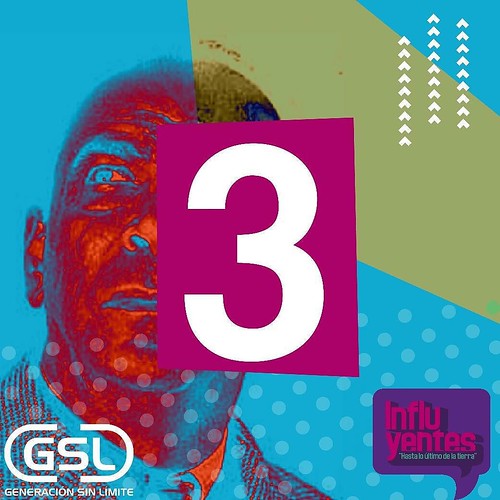Was injected at the distraction site, using a 30-gauge needle. The injections were done at middistraction due to the fact that BMP activity is highest during this time and decreases at the beginning of consolidation [12]. The injection technique consisted of using the point of the needle to palpate the tibia from proximal to distal until the needle fell into the distraction gap. The accuracy and reproducibility of this injection technique was previously verified through testing with methylene blue injections in mice that had undergone DO. Control mice were injected with 20 ml of saline alone. The mice were sacrificed at two end points: post-osteotomy day 34 (midconsolidation) and post-osteotomy day 51 (full consolidation) byHeparan Sulfate and Distraction OsteogenesisFigure 1. Schematic MedChemExpress Triptorelin depiction of distraction osteogenesis procedure, timeline and sample distribution. doi:10.1371/journal.pone.0056790.gCO2 asphyxia under general anesthesia. (Refer to Figure 1 for schematic of DO timeline, procedure and sample distribution).7. Immunohistochemical protocol and analysis of bone tissue sectionsDistracted tibial samples were fixed in 10 buffered formalin overnight, dehydrated in different gradients of acetone, embedded in a mix of methylmethacrylate (MMA) and butylmethacrylate (BMA), and 6 mm sections were made using a Leica RM 2255 microtome (Leica Microsystems, Richmond Hill, ON). Sections were then deplastified, incubated 10 minutes with 3 hydrogen peroxide; then incubated 20 minutes in PBS containing 10 normal horse serum. Distracted tissue sections were 1934-21-0 chemical information probed overnight at 4uC with commercially available polyclonal goat antibodies specific for the target proteins examined, namely BMP2, -3, -7, Smads 1/5/8, Noggin, Gremlin, Chordin, and BMPR1A (Santa Cruz Biotech.; 1/100 dilution in 1 horse serum). Sections were incubated with biotinylated horse anti-goat secondary antibody (Santa Cruz Biotech. 1/400 dilution in 1 normal horse serum) for 30 minutes, stained using the avidin-biotin complex method 30 minutes; followed by 3,39-diaminobenzidine (DAB)-peroxidase staining. Sections were then counterstained with hematoxylin and mounted 23727046 with Permount (Fisher Scientific, Montreal, QC). A negative control was performed for each slide tested by omitting the primary antibody. Pictures of distracted zones were taken under 1006 and 4006 magnification using a Leica microscope (Leica Microsystems, Richmond Hill, ON) attached to a Q-Imaging camera (Olympus DP70, Japan). As previously described by our group [12,14,42] and others [43,44], tissue sections of callus were analyzed using a semiquantitative method for grading positive cell staining and analyzed blindly in triplicates by a single specialist., This semi-quantitative technique scores each immunostained section as a percentage of positively-stained cells compared to total cells, whereby: 2represents no staining in the majority of cells; +represents staining in less Table 1. Classification of Bone Fill Scores.4. Tissue CollectionDistracted tissues located between the proximal and distal bone fragments were collected and sent for analysis by Faxitron radiography, microcomputed tomography (mCT), followed by immunohistochemistry and histology. For mCT and radiological imaging, operated 23115181 tibiae were immersed in 10 buffered  formalin and washed with 16 phosphate-buffered saline (PBS) post sacrifice. Soft tissues were not removed from distracted bone specimens to keep the callus intact. Samples were t.Was injected at the distraction site, using a 30-gauge needle. The injections were done at middistraction due to the fact that BMP activity is highest during this time and decreases at the beginning of consolidation [12]. The injection technique consisted of using the point of the needle to palpate the tibia from proximal to distal until the needle fell into the distraction gap. The accuracy and reproducibility of this injection technique was previously verified through testing with methylene blue injections in mice that had undergone DO. Control mice were injected with 20 ml of saline alone. The mice were sacrificed at two end points: post-osteotomy day 34 (midconsolidation) and post-osteotomy day 51 (full consolidation) byHeparan Sulfate and Distraction OsteogenesisFigure 1. Schematic depiction of distraction osteogenesis procedure, timeline and sample distribution. doi:10.1371/journal.pone.0056790.gCO2 asphyxia under general anesthesia. (Refer to Figure 1 for schematic of DO timeline, procedure and sample distribution).7. Immunohistochemical protocol and analysis of bone tissue sectionsDistracted tibial samples were fixed in 10 buffered formalin overnight, dehydrated in different gradients of acetone, embedded in a mix of methylmethacrylate (MMA) and butylmethacrylate (BMA), and 6 mm sections were made using a Leica RM 2255 microtome (Leica Microsystems, Richmond Hill, ON). Sections were then deplastified, incubated 10 minutes with 3 hydrogen peroxide; then incubated 20 minutes in PBS containing 10 normal horse serum. Distracted tissue sections were probed overnight at 4uC with commercially available polyclonal goat antibodies specific for the target proteins examined, namely BMP2, -3, -7, Smads 1/5/8, Noggin, Gremlin, Chordin, and BMPR1A (Santa Cruz Biotech.; 1/100 dilution in 1 horse serum). Sections were incubated with biotinylated horse anti-goat secondary antibody (Santa Cruz Biotech. 1/400 dilution in 1 normal horse serum) for 30 minutes, stained using the avidin-biotin complex method 30 minutes; followed by 3,39-diaminobenzidine (DAB)-peroxidase staining. Sections were then counterstained with hematoxylin and mounted 23727046 with Permount (Fisher Scientific, Montreal, QC). A negative control was performed for each slide tested by omitting the primary antibody. Pictures of distracted zones were taken under 1006 and 4006 magnification using a Leica microscope (Leica Microsystems, Richmond Hill, ON) attached to a Q-Imaging camera (Olympus DP70, Japan). As previously described by our group [12,14,42] and others [43,44], tissue sections of callus were analyzed using a semiquantitative method for grading positive cell staining and analyzed blindly in triplicates by a single specialist., This semi-quantitative technique scores each immunostained section as a percentage of positively-stained cells compared to total cells, whereby: 2represents no staining in the majority of cells; +represents staining in less Table 1. Classification of Bone Fill Scores.4. Tissue CollectionDistracted tissues located between the proximal and distal bone fragments were collected and sent for analysis by Faxitron radiography, microcomputed tomography (mCT), followed by immunohistochemistry and histology. For mCT and radiological imaging, operated 23115181 tibiae were immersed in 10 buffered
formalin and washed with 16 phosphate-buffered saline (PBS) post sacrifice. Soft tissues were not removed from distracted bone specimens to keep the callus intact. Samples were t.Was injected at the distraction site, using a 30-gauge needle. The injections were done at middistraction due to the fact that BMP activity is highest during this time and decreases at the beginning of consolidation [12]. The injection technique consisted of using the point of the needle to palpate the tibia from proximal to distal until the needle fell into the distraction gap. The accuracy and reproducibility of this injection technique was previously verified through testing with methylene blue injections in mice that had undergone DO. Control mice were injected with 20 ml of saline alone. The mice were sacrificed at two end points: post-osteotomy day 34 (midconsolidation) and post-osteotomy day 51 (full consolidation) byHeparan Sulfate and Distraction OsteogenesisFigure 1. Schematic depiction of distraction osteogenesis procedure, timeline and sample distribution. doi:10.1371/journal.pone.0056790.gCO2 asphyxia under general anesthesia. (Refer to Figure 1 for schematic of DO timeline, procedure and sample distribution).7. Immunohistochemical protocol and analysis of bone tissue sectionsDistracted tibial samples were fixed in 10 buffered formalin overnight, dehydrated in different gradients of acetone, embedded in a mix of methylmethacrylate (MMA) and butylmethacrylate (BMA), and 6 mm sections were made using a Leica RM 2255 microtome (Leica Microsystems, Richmond Hill, ON). Sections were then deplastified, incubated 10 minutes with 3 hydrogen peroxide; then incubated 20 minutes in PBS containing 10 normal horse serum. Distracted tissue sections were probed overnight at 4uC with commercially available polyclonal goat antibodies specific for the target proteins examined, namely BMP2, -3, -7, Smads 1/5/8, Noggin, Gremlin, Chordin, and BMPR1A (Santa Cruz Biotech.; 1/100 dilution in 1 horse serum). Sections were incubated with biotinylated horse anti-goat secondary antibody (Santa Cruz Biotech. 1/400 dilution in 1 normal horse serum) for 30 minutes, stained using the avidin-biotin complex method 30 minutes; followed by 3,39-diaminobenzidine (DAB)-peroxidase staining. Sections were then counterstained with hematoxylin and mounted 23727046 with Permount (Fisher Scientific, Montreal, QC). A negative control was performed for each slide tested by omitting the primary antibody. Pictures of distracted zones were taken under 1006 and 4006 magnification using a Leica microscope (Leica Microsystems, Richmond Hill, ON) attached to a Q-Imaging camera (Olympus DP70, Japan). As previously described by our group [12,14,42] and others [43,44], tissue sections of callus were analyzed using a semiquantitative method for grading positive cell staining and analyzed blindly in triplicates by a single specialist., This semi-quantitative technique scores each immunostained section as a percentage of positively-stained cells compared to total cells, whereby: 2represents no staining in the majority of cells; +represents staining in less Table 1. Classification of Bone Fill Scores.4. Tissue CollectionDistracted tissues located between the proximal and distal bone fragments were collected and sent for analysis by Faxitron radiography, microcomputed tomography (mCT), followed by immunohistochemistry and histology. For mCT and radiological imaging, operated 23115181 tibiae were immersed in 10 buffered  formalin and washed with 16 phosphate-buffered saline (PBS) post sacrifice. Soft tissues were not removed from distracted bone specimens to keep the callus intact. Samples were t.
formalin and washed with 16 phosphate-buffered saline (PBS) post sacrifice. Soft tissues were not removed from distracted bone specimens to keep the callus intact. Samples were t.